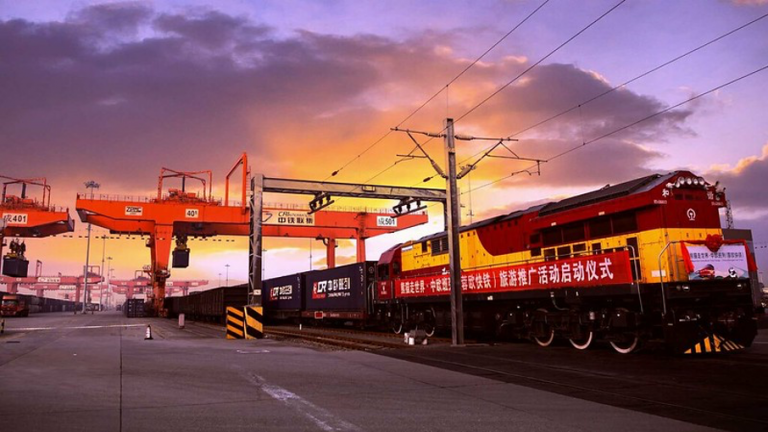
China Monitor is our brand-new program that analyses China’s economic and foreign policies. It also aims to predict the consequences of Beijing’s policy for the global economy, the EU as well as Central and Eastern European countries such as Poland.
Date: 19 August 2020 Author: Paweł Paszak
The Silk Railway Route is slowly gaining momentum
Since May 2020, rail traffic on the Silk Railway Route between China and Europe has reached record levels. In May, the number of freight trains was equal to 1033 whilst in June it increased to 1169. In July, 1232 trains left from Chinese cities – the highest number ever. Compared to 2019, traffic increased by 41% in the first seven months, with 68% growth in July alone. The reason for the increase in the number of freight trains was a reduction in air and maritime transport capacity in addition to a growing demand for medical supplies, among others.

Despite the ongoing pandemic, rail transport did not suffer any major disruption, which significantly increased the interest of manufacturers in this form of freight transportation. The current infrastructure is not adapted to such a high demand, which results in congestion at the transshipment terminals, mainly in Khorgas on the Chinese-Kazakh border and Małaszewicze in Poland. These problems allow to expect an increased number of investments in the coming years which will unlock the full potential of rail transport. An example of such venture is the work on the expansion of the transshipment terminal in Małaszewicze, which is essential due to the use of a narrower rail gauge (1.435 mm) than the one in operation in the former USSR countries (1.520 mm). In June 2020, PKP Cargo signed a contract for the implementation of an investment which, according to the information provided by the company, will “contribute to increasing the capacity of the terminal in Małaszewicze to a maximum of over 223,000 TEU and expanding the storage capacity of the container yards by 1,650 TEU to over 3,500 TEU starting in 2021.” Work on the E-20 line is underway in order to improve the traffic of trains, including those freight ones from Asia, whose speed on the new route is expected to reach 120 km/h (75 mph).
Support Us
If content prepared by Warsaw Institute team is useful for you, please support our actions. Donations from private persons are necessary for the continuation of our mission.
It is worth noting that on January 6, after 12 days of travel, the first train from a 12 million city of Xi’an arrived in Poland, covering the route of 9477 km (5889 mi). This event is interesting because the carriers used an alternative route through Ukraine. Unlike the E-20 route through Terespol, there is no need to transship containers at the border, because from the border with Ukraine to the Euroterminal in Sławków, near Dąbrowa Górnicza, there is the longest section of the Broad-Gauge Metallurgy Line (LHS) in Poland. From there, after transshipment, goods can be distributed to Poland, other countries of the region and Western Europe. According to the information provided by one of the carriers (Nunner Logistics), a regular connection from Xi’an, through Sławków to Amsterdam and London is to be launched in September. It has a chance to become an alternative to the route through Małaszewicze, allowing to bypass possible transshipment congestion.
Rail transport, despite the favorable development dynamics, still plays a subordinate role in comparison to maritime transport, which allows to carry much more containers at a much lower price. According to the available data, the share of railway varies between 2 and 4% of the total trade between China and the European Union. While this mode of transport cannot replace sea freight, it can play a complementary role towards the maritime transport. Rail transport is faster than sea freight and simultaneously much cheaper than air freight, providing a satisfactory alternative for goods niches. The process of making carriers independent of subsidies provided by the Chinese authorities, which until recently covered 20-60% of the cost of transport to Europe, will be crucial for the future of the Silk Railway Route.
_________________________________
All texts published by the Warsaw Institute Foundation may be disseminated on the condition that their origin is credited. Images may not be used without permission.
















